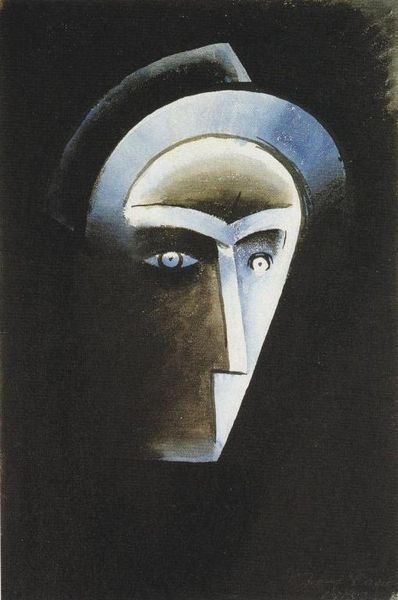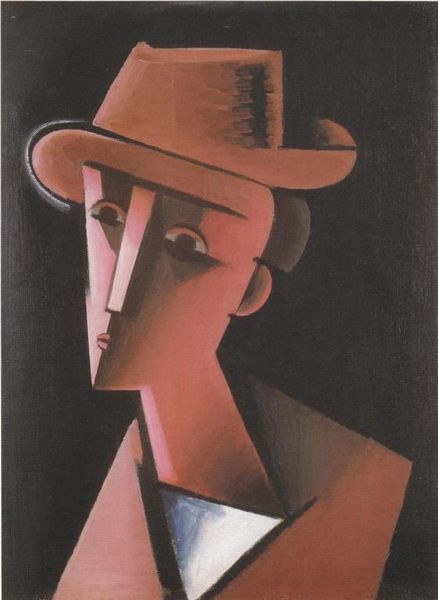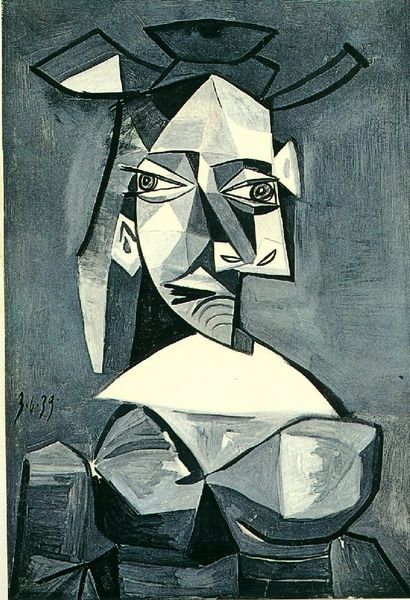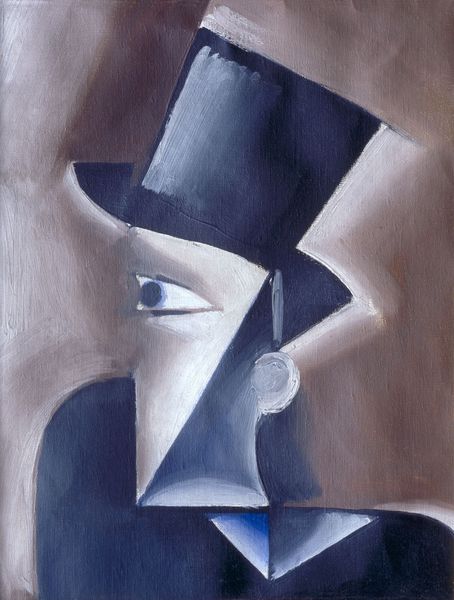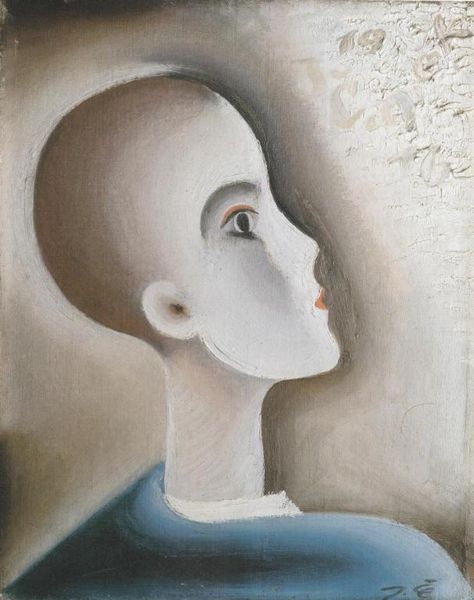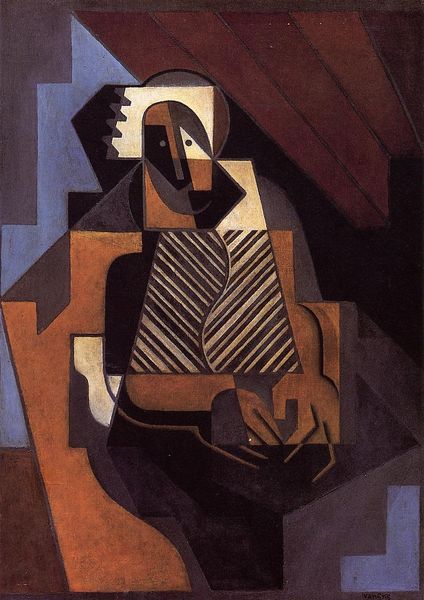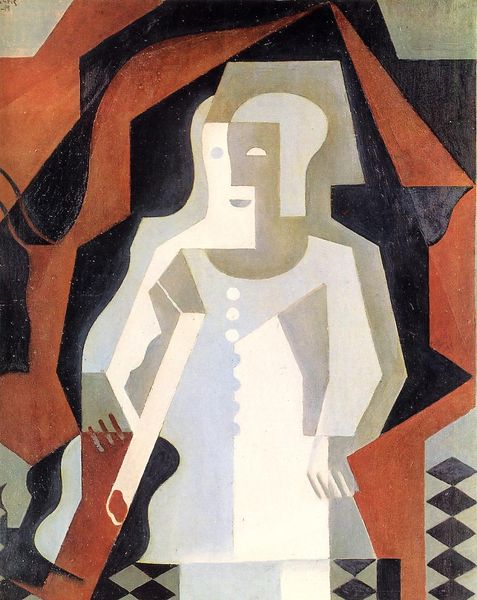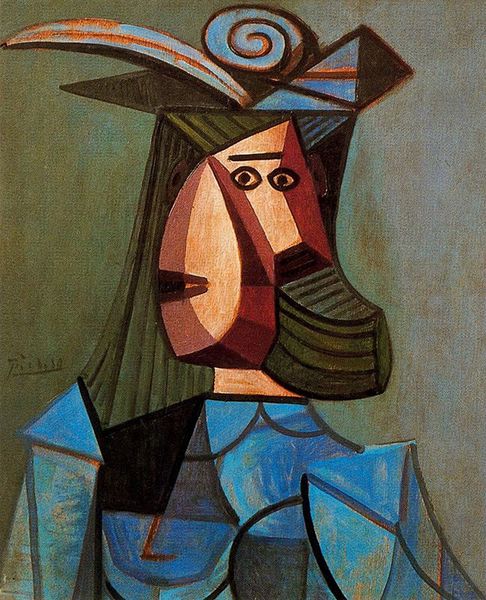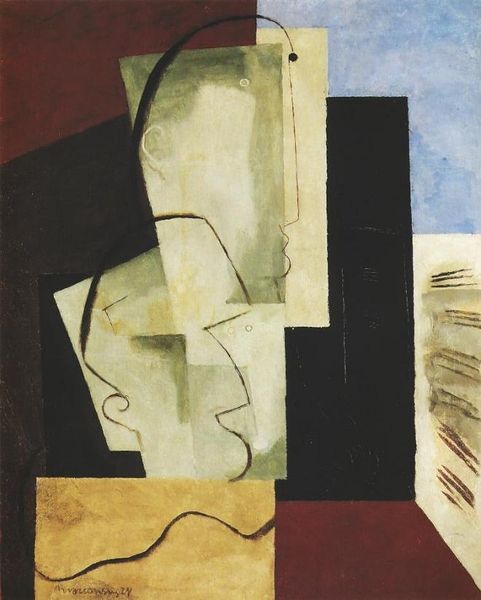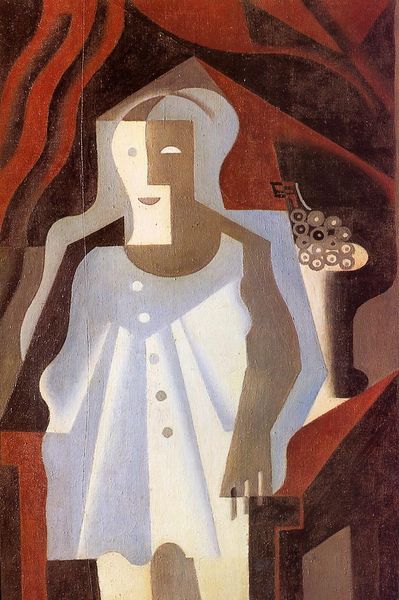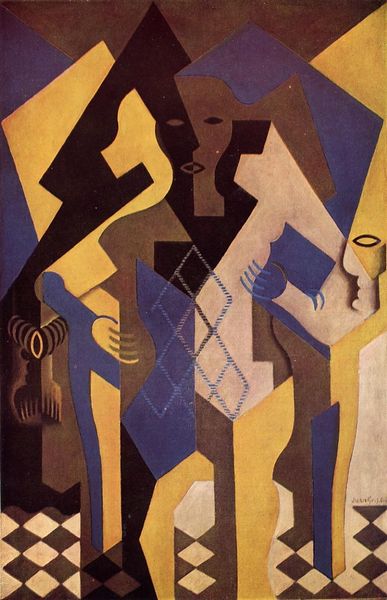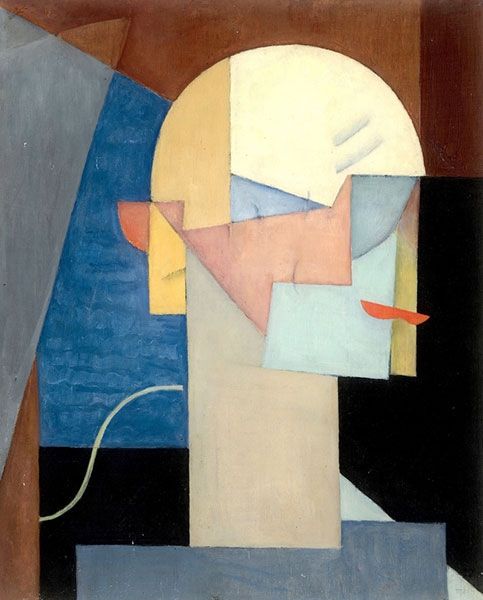
painting, oil-paint
#
portrait
#
cubism
#
painting
#
oil-paint
#
figuration
#
form
#
expressionism
#
line
#
portrait drawing
#
modernism
Copyright: Public domain
Curator: Good morning. Today, we’re looking at Josef Capek’s “Hlava dívky,” or "Head of a Girl," painted in 1917 using oil on canvas. Editor: Its melancholic blue tones immediately strike me. The geometric shapes create an intriguing, almost severe mood. The simplified lines and flat planes offer such a directness to the portrait, which still feels enigmatic. Curator: It’s quintessential Capek. We see his exploration of Cubist principles, influenced by his time in Paris. But Capek developed a more personal, expressive style. Note how he’s used these fragmented forms not to dissect reality as Picasso might, but to construct an emotional essence. The overall monochrome further amplifies this quiet feeling. Editor: Right. The blue palette is particularly interesting. Is it suggestive of any specific social or emotional contexts prevalent in Bohemia at the time? Was Capek perhaps using this figure as a symbol or reflection of broader sentiments circulating in Prague around the end of the first world war? Curator: The art scene in Prague during that period was politically charged. While many artists aligned themselves with nationalistic causes, the avant-garde, like Capek, frequently engaged with universal themes and aesthetics detached from specific political agendas. In other words, his work may touch on feelings indirectly associated with a population experiencing wartime hardships and social unrest. Yet his commitment to capturing a sort of distilled emotion also resonates beyond Bohemia. The reduction of facial features allows us to interpret the figure freely. Editor: It certainly avoids easy interpretation. How would you describe the interaction of light and shadow in constructing form here? Curator: The contrast is muted, but significant. Soft light creates planes while also creating the impression of hard angles. The very subtle chiaroscuro contributes significantly to the volumetric feel and dimensionality. Overall, these careful formal relations suggest not only the aesthetic commitments of modernism, but also perhaps its deeper existential preoccupations. Editor: True. Even the decorative floral headdress, rendered so simply, becomes a powerful compositional element, subtly counteracting the rigidity. This makes for a lasting and fascinating work. Curator: Indeed, the balance between formalism and expressiveness is striking and still resonates profoundly today.
Comments
No comments
Be the first to comment and join the conversation on the ultimate creative platform.
